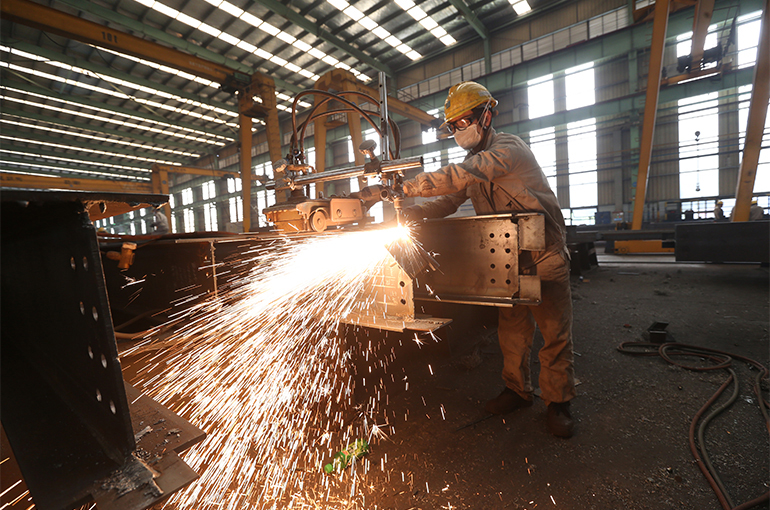 China’s Factory Activity Rises to Four-Month High in March, Caixin PMI Shows
China’s Factory Activity Rises to Four-Month High in March, Caixin PMI Shows(Yicai) April 1 -- Activity in China’s manufacturing sector expanded last month at the fastest pace since November, mainly because both domestic and overseas demand strengthened, according to the findings of a widely watched private survey.
The Caixin manufacturing purchasing managers’ index came in at 51.2 for March, up from 50.8 in February and remaining in expansion territory above 50 for the sixth consecutive month, data released by financial media group Caixin showed today. The figure was 50.1 in January, 50.5 in December, and 51.5 in November.
The official manufacturing PMI published by the National Bureau of Statistics yesterday climbed to 50.5 in March from 49.1 in February, expanding at the swiftest pace in a year. While Caixin’s manufacturing PMI focuses on small- and medium-sized enterprises, the NBS one mainly tracks larger state-owned firms.
“The economy had a stable start to the year, with signs of further recovery and improvement,” said Wang Zhe, senior economist at Caixin Insight Group.
“Both supply and demand continued to increase,” Wang noted. “In March, output grew for the 17th straight month and at the fastest pace in four months, while the sub-index for total new orders stayed in expansionary territory for the sixth straight month.”
New export orders recorded the fastest growth in nearly a year last month. “The overseas demand growth momentum recorded in February was extended, with the indicator for new export orders rising to the highest point since last April,” Wang noted.
As a result, Chinese manufacturers raised their purchasing activity and slightly lifted employment levels. “Continued market improvement drove a recovery in employment, though it remained limited,” Wang explained. “The corresponding gauge moved into expansionary territory in March for the first time since August 2023.”
Regarding prices, average input costs fell for the first time in six months in March, despite worsening supply conditions. These cost savings helped Chinese goods producers lower their selling prices again.
Supplier logistics were slightly delayed, as some suppliers’ delivery time lengthened, with the related sub-index falling into contraction for the first time since October last year. However, post-production inventories declined for the second straight month in March as finished goods were shipped out for order fulfillment.
Looking ahead, businesses remained optimistic. “The majority of surveyed companies expressed confidence in the near-term economic outlook, although some remained cautious over a potential escalation in global trade tensions,” Wang pointed out.
“The government has made boosting consumption the top priority of its economic work this year,” Wang said. “In 2025, as the external environment becomes increasingly severe and complex, China’s macroeconomic policies need to be more proactive and decisive, with measures implemented as soon as possible to support a sustained economic recovery.”
Editor: Futura Costaglione